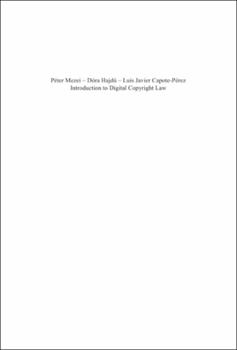Introduction to Digital Copyright Law
Date
2018Abstract
The broadening of copyright regulation has always been due to different factors since the appearance of Gutenberg’s printing press in the middle of the 15th century. Amongst these factors the technological innovation and the constant changes of the copyright holders’ and members of the society’s needs have been the most notable ones. However, the first two centuries of copyright law might be characterized as the age of slow development. Contrary to this the importance of copyright regulation has extremely expanded in the last half century. The invention of photocopying machines and audio and video tape recorders that are capable for multiple reproduction of protected subject matter (mainly literary works, sound recordings and audiovisual contents) has speed up disputes between the different stakeholders. It has therefore become urgent to settle the emerging economic, social and legal disputes.
The authors of this book take steps to introduce students some of the most recent and relevant examples of these disputes. Digitization has become such a dominant activity that it similarly can contribute to the preservation of our culture. Therefore issues of digitization by libraries and private corporations. The emergence of the problematic of and the solution for the orphan works dilemma also worth to mention and discuss. P2P file-sharing is a relatively new area of digital copyright law, but belongs to the most important question everywhere. The United States and the EU Member States follow, however, different paths in resolving this problem. The United States concept of contributory and vicarious liability doesn’t exist on the European Continent, where – on the other hand – the public law and technological control seems to be much more effective than private law (copyright law). Related to the question of P2P file-sharing, the question of private copying exception rises up. In the past few years the Court of Justice of the European Union has been elaborating a new approach of the theory of private copying levies. Finally, the digital natives (as Viviane Reding has called the young generation that use internet as a main way of communication) contribute to the improvement of our culture as well. These usages have constantly contributed, however, to the emergence of several remarkable concerns, too. It is therefore necessary to discuss the interplay of copyright law and the web 2.0 phenomenon.






